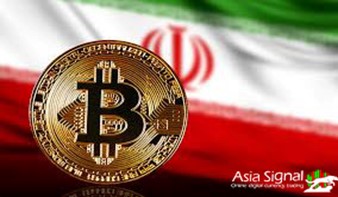Some of Asia's largest banking institutions are working on a multiple project to launch digital currency and Crypto Signal Leaks, designed to bypass external problems and have easier rules of fiat money. Several large banks across Asian cryptocurrency have been unified to build their trans-national digital currency, according to a joint declaration issued February 23.
This project is called the association of several central banks over the digital currency or M-CDBC. The Hong Kong project will partner, the Central Bank of Thailand, the Central Bank of the United Arab Emirates and the Chinese Central Bank's Digital Currency Institute, to create a prototype of the digital currency using Ledger technology.
The project will work in tandem with Inthanon-Lion Rock research, which began in 2019, the statement said. Digital currency payment transactions will be facilitated in real time and will operate 24/7 form, it said. The stated goal of the project is to address the difficulties of overseas payments. These include inefficiencies of cost and complex rules that involve money transfers from one country to another.

Asian cryptocurrency has been unified to build their trans-national digital currency.
As previously described by the Deputy Governor of the National Bank of Thailand, Matti Supappongse: This model provides a network where borders are no longer effective, and users can transfer their existence to the P2p peer. The project's design and key findings added new dimensions to border-bank studies. The central banks participating in the project hope to attract more institutions to the project, which aims to make it more convenient for CDBC exploration in Asia and beyond.
The rapid growth of digital currency in recent years has forced several governments and central banks to create a Stibel Coin and Futures Signal for decentralized currencies such as Bitcoin and Ether. The failure of governments to control or track the flow of digital currencies will undoubtedly result in more CDBC in the coming years. China is ahead of other countries in this field, and already has tested biometric digital wallets for its digital yuan.
Asia Leading in Digital Currency Industry
Digital currency is more popular in the East Asia and Pacific region than anywhere in the world, accounting for at least 38 percent of all users of virtual currencies. Other cryptocurrency proponents, such as Bitcoin, have finished second in Europe with 27 percent and North America third with 17 percent. In addition, resident and active users in Latin America are 14 percent and the Middle East accounts for four percent of the digital currency market.
A review of statistics in 2020 and the early months of 2021 shows that most large digital currency companies are expanding their range of activities towards Asia. In the first half of 2020, at least 57% of digital currency exchanges were formed in the Asia-Pacific region, Europe, the Middle East and Africa. It was 51% in 2019 and 43% in 2018.
It is predicted that with the increasing demand for cryptocurrencies and the development of digital currency trading platforms, the approach and policy of different governments in the world will become dramatic changes and the number of users and advocates of digital currencies will increase in the Asia-Pacific region.
The use of cryptocurrency currency exchange rates has been widely popular worldwide, especially in Asian region, where the popularity of digital currencies is increasing daily. In areas of Asia, digital currencies are now the center of many lives, following the added value that digital currencies have had, has attracted many users to trade in the basin and convert their money into digital currency. Singapore and Thailand, on the other hand, have emerged as the world's center for digital currency trading.
Asian cryptocurrency, Binance is growing rapidly.
According to a news release issued some time ago by the CEO of Binance Spot Trading Signals, the exchange has been carrying out relatively large-scale development activities in the various basins in parts of Asia. One of the biggest activities by Zhao was recently carried out in Dubai, where Binance co-operated with Dubai's World Trade Center. Binance has expanded in Singapore, and according to a recent statement by Zhao, the Binance exchange will become one of the leading firms on the Singapore Stock Exchange. Crypto.com is also the largest online digital currency support company in Singapore, worth a total of $500 million.
90% of Big Bitcoin and Digital Currency Deals Are Done in Asia
Statistics show that most shares in the trading market of digital currencies; Most of the activity of the whales and the most massive transactions are done in Asia and especially in China. Additionally, more than 60% of the processing power or hash of the Bitcoin network is in progress in Asian countries. According to figures from the market, the Asian countries have secured a greater share of the market, and they are one of the flagships.
Know the popular Asian cryptocurrency
Data on the CoinGecko website show that two tokens of the Shiba Ino ecosystem, SHIB and BONE, were the focus of attention in Asia this week.
Kevin Gough, the world's largest independent digital currencies data collector, recently identified ten most popular weekly collections in Asia, the United States and Canada. Shiba Ino and Tuken Native Shiba Ecosystem, BONE have been listed in the top ten currencies in all three regions.
In Asia, Shiba Eno stood in fifth place on the list of most popular Coyans and Bone ranked tenth. SHIB, on the other hand, has emerged as the fourth most popular Kevin in the United States, and BONE has achieved seventh place in the region. Also in Canada, Shiba Eno came in fourth place and Bone took tenth place.
Shiba Ino's ecosystem has become increasingly popular these days and recently launched its mobile beta version of collectible card games called Shiba Eternity in Vietnam. Since XFUND announced an estimated Mainnet upgrade date, rumors have also been circulating on social media about possible Shibarium launch on 15 August.
Asian users' strong interest in investing in digital currencies!
A new study by Accenture found that 52% of Asian cryptocurrency investors invested in the digital currency industry in the first quarter of 2022. Their digital assets, which include digital currencies, stills, and digital credit funds, constitute an average of seven percent of their investor portfolio. As such, digital capital is the fifth largest asset class in Asia.
According to reports, the volume of investments in Asian cryptocurrency is more than in Fiat International currencies, commodities and in some cases equivalents or beyond the shares of private and risky companies and funds.
The survey was conducted with 3,200 Asian investors (China, Hong Kong, India, Indonesia, Japan, Malaysia, Singapore and Thailand) who had $100,000 to $1 million in assets available, Accenture reported.
By the end of 2022, 73% of Asian investors are expected to enter the digital asset market. However, the results also show that 67 percent of Asian Investment Management, Planning and Consulting firms do not plan to join the Digital Currencies Train. These companies have said they do not believe in the industry much and are more likely to see how the future works.
Thus, Accenture concluded that most Asian cryptocurrency investors receive advice from invalid sources on investing in digital currencies.
From Iran to Japan; what is the state of national digital currencies in Asia?
The establishment and supply of national digital currency has become a concern for officials in many countries around the world. Some countries, such as China, do this with the aim of reducing their dependence on the U.S. dollar, while others look for a way to provide more efficient and easier payment methods. But how has the process of implementing the national digital currencies in Asia, the largest continent in the world, been so far, and what fate awaits these new projects?
According to the Kevin Telegraph, the increased attention to digital currencies has led a number of governments to create their own digital alternatives. Over the past few years, different countries have shown interest in national digital currencies, or "digital versions of fiat currencies released by the government".
Given the capacity of governments to use block chain technology to facilitate the implementation of simplified fiscal policies, national digital currencies with privacy features and even foreign banking services to areas that do not have access to banking services will always attract more attention from different governments in the world.
Studies conducted so far have found that more than 80% of central banks are investigating national digital currencies. Some work on the proof stage of the concept of their project, which can eventually lead to the introduction of a fully operational plan. Of the surveyed central banks, 10 percent plan to release their national digital currency version designed for micro payments for the next three years, and 20 percent will do so in the next six years.
In Asia, these efforts were accompanied by the release of the world's first national digital currency in China, starting after the creation of a special working group in 2014. In 2016, the Central Bank of China established its own private digital currency institution, which developed a prototype national digital currency.
Important Asian banks have shown great interest in national digital currencies, and reports suggest that central banks in Thailand, Hong Kong, and China are trying to create a digital ledger (DLT) technology that is designed to create a prototype of the national digital currency to reduce cross-border disputes.
In the following, we will review some of the Asian continent's national digital currency projects and will first look into Iran's national digital currency.

The Iranian authorities have in recent years repeatedly raised the issue of launching and releasing national digital currency
Iran
The Iranian authorities have in recent years repeatedly raised the issue of launching and releasing national digital currency. However, in the past year, due to the growth of the digital currency market and increasing popularity of this asset class among Iranian investors, the executive and regulatory bodies have pursued the issue of national digital currency more seriously than before.
A few days ago, Ali Saleh Abadi, the new governor of the Central Bank announced that Iran's national digital currency would be released and set up in the future on a trial basis. He said the Central Bank is studying the issue and a working group has been formed in this field in collaboration with the parliamentary economic commission.
Officials have not yet revealed more details about Iran's National Digital Currency Project, but if the governor's promises to be fulfilled, contrary to previously reported concerns about Iran's national digital currency, we will likely see Iran's national digital currency in a few years.
China
China, one of the world's top economies, has adopted the performance of national digital currencies by issuing digital yuan. The digital yuan is a national digital currency project published by the Central Bank of China.
The Chinese digital yuan, known in China as the Digital Currency Electronic Payment System (DCEP), is intended to replace cash payments entirely and has been released in major Chinese cities since April 2020 (Farvardin 99).
Although the digital yuan supports some features related to anonymity, it is registered as an app on smartphones and controlled and tracked by the Chinese government; this means the government can block any account it wants.
Perhaps one of the benefits of this payment system is that users can retrieve or correct mistransactions in the digital yuan network; this is one of the features that are not available in decentralized digital currencies such as Bitcoin.
With the formation of China's national digital currency, various countries, notably the United States, have become increasingly concerned that the National Digital Currency Initiative will help China increase the surveillance of its citizens and private companies.
It can also be seen as an attempt to eliminate the dominance of the U.S. dollar in international trade. However, the use of China's digital yuan is largely restricted to the same country, and there have been no significant efforts of Asian cryptocurrency countries to make international use of China's national digital currency.
Hong Kong
The Central Bank of Hong Kong recently released White Paper Paris, which is reviewing plans to test national digital currency benefits in micro-payments for overseas markets.
Hong Kong now operates as a single state and two systems, in which it maintains its financial and judicial system separate from China. However, the Hong Kong Central Bank is working with the Central Bank of China to review the development of its national digital currency infrastructure, the "Hong Kong Digital Dollar".
As stated in the white paper, in the Hong Kong digital dollar model, the architecture is designed in the form of a two-layer and flexible efficient distribution that represents the national currency. that allows transactions to be conducted with privacy, tracking and synchronization of the General Offices abroad".
The White Paper is the result of research by Hong Kong's major financial institution on national digital currencies, which has been developed since 2017 with support from Project LionRock. In its project, Hong Kong's central bank also considered the opinion of academic and industrial specialists, and plans to conduct more studies to ensure the national digital currency is ready for large and small payments.
Read also: Destroying the World's Economy with State Money: Ancient Roman Hyperinflation and its Resemblance to Today
South Korea
In its latest effort to make the country's national digital currency public, the Central Bank of South Korea is seeking a technology partner to accompany them in testing the national digital currency program scheduled to take effect by the end of the year.
In a report published in February (Bahman 99), the Central Bank of South Korea announced plans for testing and distributing digital won. The program addresses the legal challenges faced by the publication of a government digital currency.
Regardless of the choice of an active partner in the technology sector to assist with the project, the Central Bank of South Korea has announced that its national digital currency will be used primarily in a limited experimental environment to check its performance and security.
According to an official at the Central Bank of South Korea, the number of cash transactions in the bank is decreasing and the government agency is taking steps to prepare for possible changes in payment systems around the world.
Philippines
In the summer of 2020, the Central Bank of the Philippines began its national digital currency launch survey by forming a working group to study the issue.
At a virtual meeting, the government agency confirmed that a committee had been formed to investigate national digital currency. At the meeting, Benjamin Diokno, the head of the Central Bank of the Philippines, explained that the feasibility and assessment of the mechanisms for a national digital currency policy is underway.
Like most traditional governments and financial institutions, the Philippine government has no qualms about recognizing the importance of blockchain technology.
Dioqueneau said: "Digital currency is always beyond an asset for us and most of the blockchain technology that underlies it [is noted]."
In line with these statements, the Treasury launched a mobile app with the help of Filipino exchange PDAX and UnionBank, which uses blockchain technology to distribute government treasury bonds.
A few months later, however, we saw the Central Bank of the Philippines dismiss the possibility that its national digital currency could be released soon. The National Digital Currency Research Program has so far been able to benefit from a study of established use cases in the private sector and other industrial applications of these currencies, the country's central bank said, noting that further research should be done.
Singapore
The Singapore Monetary Authority has been exploring innovations related to national digital currencies since 2016 and is now looking for business partners to help develop its national digital currency project.
Singapore has been able to launch challenges and competitions to explore solutions and help it develop its national digital currency for micro transactions by providing a variety of solutions with more than 300 people involved.
Singapore's move to release the national digital currency began as a joint project with Project Dunbar. The company is fully focused on designing Singapore's national digital currency for domestic micro-transactions.
The Central Bank of Singapore announced soon after it announced cash prizes for National Digital Currency Idea Proposal participants. Final participants of the challenge were ANZ Banking Group (ANNEZ), Standard Chartered Bank, Creiteo Institute, Suramitsu and HSB Bank.
In 2021, Singapore authorities maintained a good stance against digital currency activity and granted licenses to digital currency exchange firms to operate in the country, as well as other providers of payment services.
Cambodia
The Cambodia National Digital Currency Project (Project Backkong) is probably one of the few national digital currencies designed for micro transactions that have become fully operational. The Money Transfer Project was officially launched in October 2020 using Blockchain Technology.
As of June 2021, the project has attracted more than 200,000 users, and has indirectly reached more than 5 million users. Additionally, Cambodia's National Digital Currency Project hosted 1.4 million transactions in the first half of 2021 worth $500 million.
Cambodia's national digital currency, developed on a Hyper Ledger platform, has mobile connectivity and allows users to connect to financial institutions and pay their payments without the need for a centralized entity to settle transactions.
Regardless of the goals announced for using the national digital currency to cut its dependence on the U.S. dollar, Cambodian authorities announced plans to review the ability to conduct cross-border transactions through cooperation with the Central Bank of Thailand and Malaysia's largest bank.
Japan
In October 2020, the Central Bank of Japan (Mehr 99) began working with a group of seven other central banks to publish a report exploring national digital currencies.
The Central Bank of Japan has since begun the process of establishing the concept to test the axial operation of its national digital currency. As the trial phase was due to end in March of this year, Japanese board officials said the digital yen must be consistent with other national digital currencies, and the Japanese Central Bank is still working on key project functions.
The ability to make transactions offline has become a feature sought by Japanese authorities; The country tries to create a digital currency that is resistant to internet disruptions due to Japan's vulnerability to natural disasters such as earthquakes, floods, and tsunamis.
Japan's Deputy Parliamentary Foreign Minister said at the beginning of 2020 that the Japanese National Digital Exchange Project could be a joint venture with government and private partners to align its goals with global changes to financial technologies.
Thailand
Thailand joined the Central Bank of Hong Kong in 2019 to test its national digital currency, used in foreign payments for financial institutions in both countries.
"The development of the national digital currency is a key milestone with the potential to change the country's financial infrastructure and ultimately a financial outlook that can make significant changes in the role of many stakeholders," according to the Central Bank of Thailand statement.
Like many other National Digital Currency Innovations, the Central Bank of Thailand is seeking public consultation, private, government and feedback on the development and supply of its national digital currency in micro-transactions.
The Central Bank of Thailand plans to start pilot projects for using its national digital currency in the second quarter of 2022.
Vietnam
The Vietnamese government had previously called on the country's Central Bank to conduct research on Black China-based currencies. Vietnam seems to have joined the rising list of countries that are seeking to create national digital currency despite its previously hard-line stance towards digital currencies.
In May 2020, the Vietnamese Ministry of Finance announced plans to research and develop a regulatory law for the digital currency industry, just as the country's growth in the popularity of digital currencies reached high levels.
Due to the benefits that national digital currency has for a small country under the U.S. dollar-dominated global financial system, the Vietnamese government in July decided to research these currencies alongside its plans to offer a national experimental digital currency.

A new Asian cryptocurrency offers many opportunities for China
Three Japanese scientists and consultant (Taiji Inoy, Wataru Takahashi and Mamoro Ishida) published an article in VoxEU (a publication founded by the Center for Economic Policy and Research, CEPR), in which they expressed their support for introducing a digital currency.
Even if this is just a suggestion made by the authors, and we don't know whether it will work, it's interesting to know that there has been a lot of research done in Asia in the CBDC area. As we previously see digital yuan tests in the mainland (and soon in Hong Kong and Macau) and through many facilities.
In my latest articles (author of the essay) I often wrote about Chinese digital yuan and its experiments in the Great Gulf (GBA), especially in Hong Kong and Macau. Digital Yuan (Digital Yuan), a digital currency unit of the Central Bank of China (CBD) and also known as DCEP (electronic digital currency payment), offers numerous opportunities for the whole of China and the Greater Gulf region.
As I said, the Central Bank's Digital Currency (CBD) is a new form of Central Bank money that is accessible to the general public, and has been accepted as a means of payment, legal money, and safe deposit of value for all citizens, businesses and government departments.
Conclusion
Digital currency exchanges have been booming and emerging during the past few years, and Asian cryptocurrency seems to be the new primary destination away from the saturated markets, Europe and America. However, investors are advised to examine the laws and regulations issued by financial authorities in various countries before deciding whether to invest and establish digital currency trading companies. We suggest you subscribe to the Leaks channel and receive useful moments. Sell or buy Crypto VIP Signal in time and be profitable.

















Comments